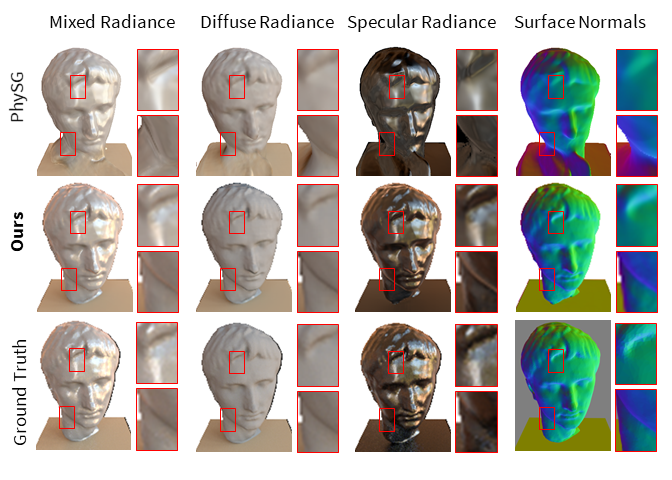Abstract
Reconstructing an object's geometry and appearance from multiple images, also known as inverse rendering, is a fundamental problem in computer graphics and vision. Inverse rendering is inherently ill-posed because the captured image is an intricate function of unknown lighting conditions, material properties and scene geometry. Recent progress in representing scene properties as coordinate-based neural networks have facilitated neural inverse rendering resulting in impressive geometry reconstruction and novel-view synthesis. Our key insight is that polarization is a useful cue for neural inverse rendering as polarization strongly depends on surface normals and is distinct for diffuse and specular reflectance. With the advent of commodity, on-chip, polarization sensors, capturing polarization has become practical. Thus, we propose PANDORA, a polarimetric inverse rendering approach based on implicit neural representations. From multi-view polarization images of an object, PANDORA jointly extracts the object's 3D geometry, separates the outgoing radiance into diffuse and specular and estimates the illumination incident on the object. We show that PANDORA outperforms state-of-the-art radiance decomposition techniques. PANDORA outputs clean surface reconstructions free from texture artefacts, models strong specularities accurately and estimates illumination under practical unstructured scenarios.
|
The source code and design of this webpage is adapted from Ref-NeRF project page. We would like to thank the authors for the inspiration. |





